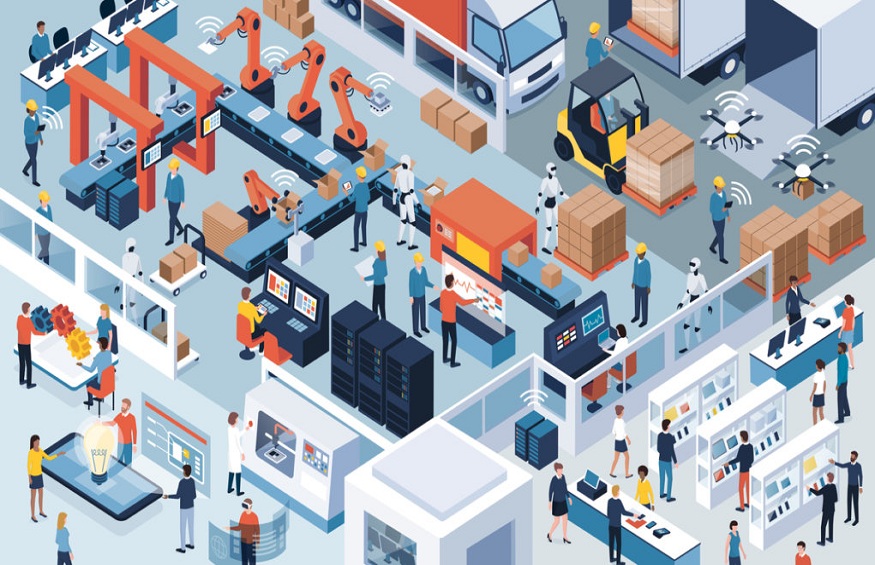Light detection and ranging (LiDAR) is an excellent sensing method for measuring an object’s precise distance. This technology can be dated back to the 1960s when it was used in airplane laser scanners. The technology wasn’t widely used until two decades later.
It was not until the introduction of GPS in the 1980s that LiDAR technology became famous as it is used to calculate accurate geospatial measurements. Since then, the technology has spread widely, including in fmcw LiDAR.
What’s LiDAR Technology?
LiDAR technology uses a pulsed laser to determine an object’s varying distance from the surface. This data, combined with information collected by the airborne system, produces precise 3D details on both the surface and the target object. The most vital components in LiDAR instruments are a scanner, laser, and GPS receiver. Photodetectors and optics are also crucial because they play a role in data collection and analysis. To acquire LiDAR data, government, and private organizations commonly used helicopters, drones, and airplanes.
Types of LiDAR
There are two types of LiDAR; let’s check them
Airborne LiDAR
LiDAR technology is installed on a drone or helicopter to capture aerial views of large areas, making it useful for various applications. Two types of LiDAR are commonly used for mapping purposes: topographic and bathymetric. Topographic LiDAR utilizes a near-infrared laser to map land areas, while bathymetric LiDAR uses a green light that can penetrate water to map underwater terrain.
Terrestrial LiDAR
Terrestrial LiDAR operates on the ground and comes in mobile and static forms. Mobile LiDAR systems are mountable on moving objects like forklifts and vehicles. They help identify objects in the driving environment. Static LiDAR systems are installed on stationary structures like tripods. This technology is also efficient in the archeology, mining, engineering, and surveying industry. LiDAR data is valuable for accurately and quickly determining the structure and shape of objects in any location.
Common LiDAR Application
Aerial Inspection
LiDAR data obtained from drones or UAVs can offer valuable aerial information about industrial assets that are challenging to inspect. This includes power lines, civil infrastructure, and other industrial assets.
LiDAR technology provides highly accurate and consistent results, thus making it possible to detect small objects and create precise 3D models of objects, such as trees, people, and walls.
Moreover, LiDAR technology is primarily automated, making it more efficient than other surveying methods that require more hands-on involvement.
The LiDAR is significantly less expensive than other mapping and surveying techniques, making it an affordable and efficient way to produce complex topographical surveys.
However, this technology comes with its set of setbacks
- You must be experienced to operate it: you need surveying experience and sensor understanding to run it.
- Hi-tech LiDAR sensors are expensive: investing in high-end LiDAR equipment is costly.
Autonomous Vehicles
LiDAR plays a vital role in technology for self-driving vehicle applications. It provides a reliable and accurate way to detect and map the surrounding environment. Unlike still image and video cameras, which may get limited by poor atmospheric conditions like rain and fog, LiDAR uses laser beams to detect objects. Then it measures distances, meaning it can operate effectively in various weather conditions.
When fitting the LiDAR in a self-driving vehicle, a system collects real-time data on the surrounding environment, including pedestrians, road markings, road obstructions, traffic signs, and other vehicles. After collecting data, it’s processed by the vehicle’s onboard computer to create a 3D mapping of the environment, which you can use to make decisions about steering, braking, and acceleration.
LiDAR works with other sensing technologies, like vision-based systems, to provide a comprehensive view of the environment. By combining the strengths of different sensing technologies, self-driving vehicles can achieve a high level of autonomy, allowing you to operate safely and efficiently regardless of environmental conditions.
Inland and Forestry Management
Since you can use LiDAR in vertical structures, even in dense forests, without a problem, it’s easy to collect data. Those working in the woods and land management can use the data to prevent fire, manage land and analyze the environmental impact.
Robotics
LiDAR technology is utilized to provide mapping and navigation capabilities to robots. By measuring the distance between the robot and surrounding objects in the environment, the autonomous system is trained to recognize the terrain and move around safely.
Conclusion
LiDAR technology like fmcw LiDAR has changed how things were done before invention. The work runs smoothly and quickly since the technology can collect and analyze the data. With LiDAR, the room for error is almost zero since it can work even in places where humans can’t access it.




